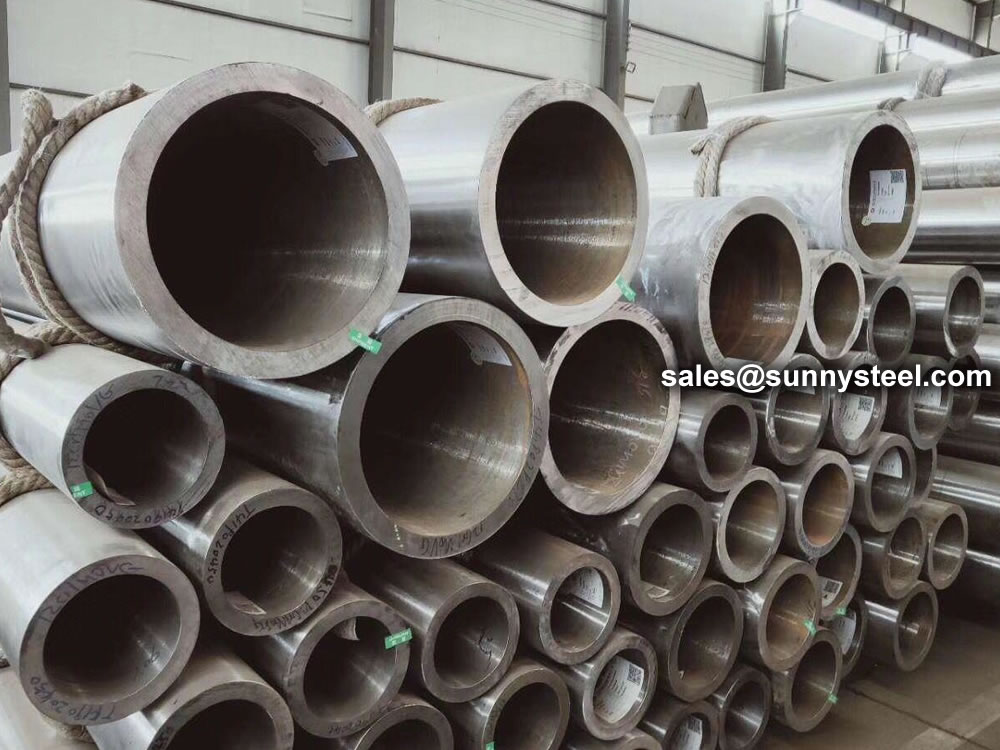Bearing Pipes
Pipes designed for bearing loads, offering high strength and durability.

Seamless pipes are commonly used in nuclear power stations due to their reliability, strength, and ability to withstand high-pressure and high-temperature conditions.
Implement standards or specifications including GB 24512.1, GB 24512.1, RCCM series, ASME series.
Nuclear power stations require reliable and durable piping systems to ensure the safe and efficient operation of the facility. Seamless pipes are known for their high reliability and resistance to leaks, making them suitable for critical applications in nuclear power stations.
Seamless pipes are manufactured without any welded joints, which eliminates the weak points that can be susceptible to failure. This enhances the overall strength and safety of the piping system, which is crucial in nuclear power stations where the containment of radioactive materials is of utmost importance.
High-Pressure and High-Temperature Resistance : Nuclear power stations operate under high-pressure and high-temperature conditions. Seamless pipes are capable of withstanding these extreme conditions without compromising their structural integrity, making them suitable for transporting steam, coolant, and other fluids within the facility.
Corrosion resistance is essential in nuclear power stations, as the fluids and chemicals involved can be corrosive. Depending on the specific requirements, seamless pipes made from corrosion-resistant materials such as stainless steel or alloy steel may be used to ensure long-term durability and safety.
| Usage | Size | Steel Grade | Specification | Typical Application | |
|---|---|---|---|---|---|
| OD(mm) | WT(mm) | ||||
| Seamless Steel Pipe used for Nuclear Power Station | 48 - 720 | 4.5 - 130 | HD245,HD245Cr | GB 24512.1 GB 24512.2 |
Carbon and alloy seamless steel pipe for Nuclear Station Island and Conventional Island |
| HD265,HD265Cr | |||||
| HD280,HD280Cr | |||||
| HD12Cr2Mo | |||||
| HD15Ni1MnMoNbCu | |||||
| TUE250B | RCC-M | ||||
| TU42C | |||||
| TU48C | |||||
| P280GH | |||||
| SA106B/C | ASME SA-106/SA-106M | ||||
| P11 | ASME SA-335/SA-335M | ||||
| P22 | |||||
| P36 | |||||
| P91 | |||||
Nuclear power is a technology which extracts usable energy from atomic nuclei via controlled nuclear reactions – normally atomic fission.
GB24512.1 seamless tubes and pipes for nuclear power plant.
| Grade | C | Si | Mn | P | S | Cr | Mo | Ni | Sn | Cu |
|---|---|---|---|---|---|---|---|---|---|---|
| HD245 | ≤0.22 | 0.15-0.39 | ≤1.04 | ≤0.025 | ≤0.02 | ≤0.25 | ≤0.15 | ≤0.25 | ≤0.030 | ≤0.20 |
| HD245Cr | ≤0.22 | 0.15-0.39 | ≤1.04 | ≤0.025 | ≤0.02 | 0.18-0.33 | ≤0.15 | ≤0.25 | ≤0.030 | ≤0.20 |
| HD265 | ≤0.22 | ≤0.44 | ≤1.44 | ≤0.025 | ≤0.02 | ≤0.3 | ≤0.08 | ≤0.3 | ≤0.030 | ≤0.20 |
| HD265Cr | ≤0.22 | ≤0.44 | ≤1.44 | ≤0.025 | ≤0.02 | 0.15-0.3 | ≤0.08 | ≤0.3 | ≤0.030 | ≤0.20 |
| HD280 | ≤0.22 | 0.1-0.4 | 0.8-1.6 | ≤0.025 | ≤0.02 | ≤0.25 | ≤0.1 | ≤0.5 | ≤0.030 | ≤0.20 |
| HD280Cr | ≤0.22 | 0.1-0.4 | 1.0-1.6 | ≤0.025 | ≤0.02 | 0.15-0.33 | ≤0.1 | ≤0.5 | ≤0.030 | ≤0.20 |
GB24512.2 are alloy steel seamless tubes and pipes for power plant.
| Grade | C | Si | Mn | P | S | Cr | Mo | Ni | Nb | N | Cu | V |
|---|---|---|---|---|---|---|---|---|---|---|---|---|
| HD12Cr2Mo | 0.07-0.16 | ≤0.54 | 0.37-0.73 | ≤0.03 | ≤0.02 | 1.9-2.6 | 0.86-1.24 | ≤0.30 | - | - | ≤0.20 | ≤0.08 |
| HD15Ni1MnMoNbCu | 0.09-0.18 | 0.21-0.54 | 0.76-1.24 | ≤0.030 | ≤0.020 | 0.14-0.35 | 0.21-0.44 | 0.95-1.35 | 0.010-0.030 | ≤0.020 | 0.45-0.85 | ≤0.02 |
| Grade | Tensile Strength, [MPa] | Yeild Strength, [MPa] | Elongation (%) |
|---|---|---|---|
| HD12Cr2Mo | 450-600 | ≥280 | ≥22 |
| HD15Ni1MnMoNbCu | 620-780 | ≥440 | ≥19 |
RCC-M steel pipe for nuclear industry equipment.
| Grade | C | Si | Mn | P | S | Cr | Mo | Ni | Al | Ceq | Cu | Sn |
|---|---|---|---|---|---|---|---|---|---|---|---|---|
| TU48C | ≤0.24 | 0.09-0.40 | 0.60-1.30 | ≤0.040 | ≤0.040 | - | - | - | - | - | ≤0.25 | ≤0.030 |
| P280GH | ≤0.22 | 0.10-0.40 | 0.80-1.60 | ≤0.025 | ≤0.020 | ≤0.25 | ≤0.10 | ≤0.50 | 0.020-0.050 | ≤0.48 | ≤0.25 | ≤0.030 |
| Grade | Tensile Strength, [MPa] | Yeild Strength, [MPa] | Elongation (%) |
|---|---|---|---|
| TU48C | 470-570 | ≥275 | Rm(A-2)≥10500 |
| P280GH | 470-570 | ≥275 | Rm(A-2)≥10500 |
The process takes place in a nuclear-fuelled power plant, where – much like in a fossil-fuelled power plant – water is turned into steam, which drives turbine generators to produce electricity. The difference between the two power plants is the heat source. Nuclear power produces electricity by splitting uranium atoms which generate phenomenal heat. This is called fission. This heat is used to create the steam which powers the generators. There is no combustion in a nuclear reactor, just the constant splitting of atoms which produces manageable heat.
Either a pressurised water reactor or boiling water reactor is used, but regardless which type of reactor is used to generate heat, the conditions under which they do are extremely hostile. This means that the finest Stainless Steel pipes and tubing are required so that they can deal with constantly high pressures and temperatures.
